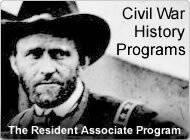
Book Review - Blood on the Moon, the Assassination of Abraham Lincoln
The Smithsonian Associates Civil War E-Mail Newsletter, Volume 4, Number 9
When my son was six years old, his class went on their first field trip to downtown Washington. When I picked him up that night, he excitedly ran into my arms and said, "We went into Ford's Theatre--Lincoln was shot there when he was watching a movie--and my teacher even knows who did it!"
I thought I knew who did it, too, until I read Blood on the Moon.
Dr. Steers explains in the Preface why he was motivated to write the book. Of the thousands dealing with the assassination, the vast majority of books are by non-academics who used secondary or tertiary sources to support their assassination theories. These theories include the view that Booth operated alone; that Booth wasn't even there; that Jefferson Davis planned and approved it; that Mary Surratt was innocent; that Dr. Samuel Mudd was just a kindly country doctor; and, that Booth escaped from the burning barn and lived into old age selling real estate in south Texas.
Dr. Steers was not originally an academic historian either, but a research scientist at the National Institutes of Health. He puts that training to good use by scientifically evaluating the records. Then, he uses those scientific results to factually establish which Lincoln assassination research of the past has merit and which does not. He culls from this every possible assassination scenario and arrives at the only answer, not just to the question, "Who did it?" but also, "Who was responsible for it?"
Steers begins with a modern day visit to Ford's Theatre, combining the National Park Service ranger's talk and his own observations to tell us what is real and what isn't. As an operational theater, Ford's is decorated for that evening's play, and not as Laura Keene or Abraham and Mary Lincoln last saw it. That's not real. But, the feeling we get from reading the ranger's excited description of events, as Steers relates it, makes us feel we're in Ford's Theatre that night, with the gaslights turned low. The box is also redone to represent how it appeared that evening. Is the Lincoln rocking chair real? No, the real one is on exhibit in Detroit. Ford's has just a reproduction. But, we know the box itself, the box where the Lincolns sat, is real. And the door leading to the box is real. The door with the hole cut out, the hole that Booth used to gain entry, shoot Lincoln, stab Major Rathbone, then jump to the stage and escape into the night. That's real. But we still don't know who did it.
Steers ends by unraveling the complex story. The true story. The factual story of what led up to these events. The events that congealed on April 14, 1865 to place John Wilkes Booth behind that door with the hole carved out, with the other people who were, metaphorically, standing beside him. Many historians, professional or not, have tried to tell this story. But it took Steers' meticulous approach to convince us. He tells the real story of the assassination of Abraham Lincoln. It's compelling, it's exciting, and it's real. Now we all know who did it.

